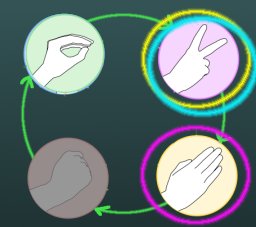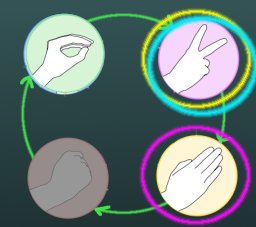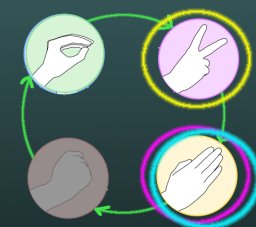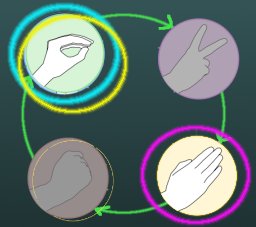I walk my daughters to school, once or twice a week (my partner takes them on the other days). It’s ten blocks. They wake up early, so it’s mostly a stroll, no rush; about ten blocks through the quiet side streets.
On the way back I take a different route, along the busy Hastings Street in East Vancouver.
Three times in the last few months, an accident happened at the intersection with Kamloops Street. Car crashes. The first one was while I was at the intersection, talking to a friend at the traffic light.
The third one was the most severe. It happened yesterday, January 11, 2012; this time I had a camera with me:
 Hastings Street goes from left to right in this picture, and Kamloops from the top to bottom-left; top is South, right is East. The “other car” had already been moved out of the intersection. Here’s a Streetview link.
Hastings Street goes from left to right in this picture, and Kamloops from the top to bottom-left; top is South, right is East. The “other car” had already been moved out of the intersection. Here’s a Streetview link.
I don’t know if anyone was hurt. There was an ambulance, but no movement around it.
All three accidents happened when the 3-lane traffic along Hastings is stopped through a traffic light, so that pedestrians can cross, and cars can cross that are going along Kamloops Street. The cars coming from Kamloops/South collide with cars going East on Hastings. Either the Kamloops cars cross too early or too late, or the Hastings cars ignore/fail to notice the traffic light. I don’t really know.
Now with passing this intersection twice a week over ca. 12 weeks (school started in September), and coming across 3 accidents, it seemed to me the other 3 days of a week should generate the same number of accidents, so it would come to 3 (accidents) * 3 (other days) / 2 (“my” days) = 4.5 “other accidents”, for a total of 7.5 accidents in ca. 3 months. Statisticians will probably point out that this is not a good estimate. But let’s make it 7 accidents in 3 months, or 7 *4 = 28 accidents in a year.
Statistics / Mapped
That seemed like a lot to me. So I asked another friend if he knows where to get more definite statistics from the city. He pointed me to one of his contacts, who in turn remembered a recent map put together by Eric Promislow:
ICBC Car Collisions 2006-10: A Google Map Visualization
It displays accident counts by intersection for the City of Vancouver, for the years 2006 to 2010. He obtained the numbers from the Insurance Corporation of British Columbia (ICBC) – who get the reports from the police.
Nicely done, Eric.
So, for the intersection of Hastings Street and Kamloops Street, there were 117 collisions reported between 2006 and 2010. By year, the counts break down like this:
2006: 17
2007: 23
2008: 25
2009: 25
2010: 27
Interpretation
So, a more or less regular pattern. One collision roughly every two weeks, for the last 4 years. Predictable. Regular. If you take a look at Eric’s map, you’ll see there are quite a lot of intersections with even more collisions. (In fact, just one block west on Hastings Street, the intersection with Nanaimo Street has many more accidents: 300 for the period, but I never saw anything of those.)
It almost looks like the only ones to be surprised about any of those collisions would be the participants, bystanders and witnesses. When I mentioned the first two accidents to some friends from the area, they said, yes, there are crashes there “all the time.”
Now my calculation from above looks spot-on: I estimated 28 accidents for 2011, and there were 27 recorded for 2010. But all accidents that I counted occurred around 9 o’clock in the morning, since I was walking home from the school.
So I thought, if Eric had the data by time of day, I would be able to compare. But he didn’t. He wrote, “ICBC withholds finer-grained info, claims privacy issues.”
Questions
I have a few questions:
- Do the accidents at the intersection of Hastings and Kamloops Street occur mostly around 9 o’clock?
- Do the morning accidents at the intersection of Hastings and Kamloops Street occur mostly when a car crosses from the South along Kamloops, and the other car is going East on Hastings?
- Do intersections with a similar number of collisions have anything in common? What kinds of commonalities?
- Does it make sense to blame the accidents only on the individuals involved?
- Does the City of Vancouver track this data and analyze for prevention?
- Does the City of Vancouver carry any responsibility?
- What aspects of an intersection can be improved?
- How many hours of additional driver training reduce the number of accidents by how much (regular training, one-time training)?
- How many km/h of speed limit reduction result in which reduction in the number of accidents?
About point 3: due to the large numbers of existing collision-prone intersections, and the predictability of collisions occuring, if indeed commonalities exist then one can try out different strategies to lower the numbers, and compare what works and what doesn’t, for example with A/B Testing. Better than doing nothing (my impression). Especially if you think across several cities. I’m not aware of this happening.
Another friend of mine pointed out that causing an accident is not (even) considered a crime. I think that would go a bit far, mainly because establishing who is at cause is quite difficult. But I think it’s worth noting: causing damage, and potentially traumatizing, if not physically hurting, innocent bystanders is actually legally sanctioned to that degree. The proven (proven by statistics such as these) risks are accepted or better, ignored by car drivers.
On the other hand, if 6. was legally accepted, and the City of Vancouver would have to pay for their share of responsibility in a lot of the accidents, I think it would not be able to afford keeping the streets open.
Also, thinking further about this I noticed that car insurance companies are compromised in the sense that for them, the more accidents, the better: more business, more revenue, more stability, more profits. As far as I know, in British Columbia, ICBC is not privately owned and controlled, so that should help working these problems out.
Oh, well
You know what? I just realized, there were two other accidents on the other side of the intersection in the last few days. But I came across these when picking up my daughters from school, on the way home, so shortly after 3 o’clock. This is getting a bit much. And 2011 looks even worse for this intersection, because my estimate should be based on higher observation counts.
But most of all, I prefer and recommend walking, cycling or taking the bus: that’s what I call civilized.
Update August 2013
One and a half years later. Things change. I witnessed no more accidents. Didn’t check the statistics though. Writing this post made a difference?





